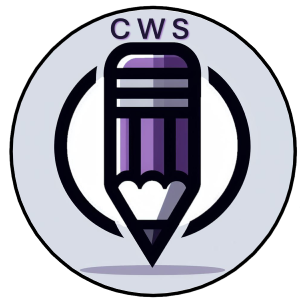 When I met my husband a few years ago, it was a coincidence. My mom had a car she was unhappy with because it was constantly in the shop. It was on yet another repair trip that she met my future father-in-law. He drove her home while the car stayed for repairs.
When I met my husband a few years ago, it was a coincidence. My mom had a car she was unhappy with because it was constantly in the shop. It was on yet another repair trip that she met my future father-in-law. He drove her home while the car stayed for repairs.
Both are the kind of people who can strike up a conversation with anyone, and before long they were discussing their families. It was pretty much inevitable they’d figure out they both had unattached children around the same age. Nothing unusual there.
Then the unprecedented happened. My mom gave my father-in-law my first name and phone number. She told him if my husband wanted to meet me he could call me. The phone number went from my father-in-law to my mother-in-law to my husband. And against all odds, he called it.
Naturally I wasn’t home when he called and he didn’t leave a message. I can’t say I blame him. “Hi, I’m the guy who got your number from my mom who got it from…” I wouldn’t have left the message either.
Luckily I was compulsive about checking caller ID in those days. I saw his name during one of those checks and realized he called. I hadn’t missed the call by much and thought about the odds of him calling at all. I realized I’d better call him back if I was serious about meeting him. (I’d already heard all of his virtues from my mother who’d confessed to me what she’d done.)
So I called him back and we had a nice chat. The rest, as they say, is history.
Why do I share this story with you today? Because everyone loves a story. And because this story has five great marketing lessons.
#1: Someone else’s opinion is worth its weight in gold
There’s a reason why surveys show prospects value case studies. They want to hear about you from someone else. Prospects want the weight of someone else’s experience and opinion to help them make up their minds. In fact, a good case study can help accelerate the sales cycle.
In my case, I got the good report from my mother who had already deemed my husband fit to meet. And it wasn’t just based on what my father-in-law had to say about him. It was also based on her assessment of my father-in-law.
If you don’t have case studies for the key personas you want to target, get them. Get them soon. You’ll be glad you did.
#2: You don’t have to be over-the-top to be viral
So often when we think of collateral that’s gone viral we think of songs or videos. Maybe it’s because that’s the kind of thing that gets hyped in the media. But content doesn’t have to be over-the-top to be viral. White papers are one of the most commonly shared kinds of collateral, yet many marketers don’t think of white papers as “viral.”
In my case, my name and phone number was the collateral. Nothing most people would consider remarkable. No picture or thoughtfully edited profile to go with it. Just a name and a number. One that passed through the hands of three people before it made it to my husband.
Your content doesn’t have to be as remarkable as you may think for it to be viral. It just has to speak to the needs of your prospect.
#3: Have a clear call to action
Now that you know you don’t have to create “special” content in order for it to be shared, it’s important to look at the content you do have. Does it have a clear call to action? A call to action is more than a phone number, although that’s good information to include. A clear call to action looks something like this:
“To contact us for your customized needs assessment, call 1-800-XXX-XXXX or go to our website at www.companywebsite.com/needs.”
A clear call to action isn’t fancy. It simply tells the prospect what the next step is and how to take it. It also sets the expectation for what they’ll get in the next step. Don’t say “needs assessment” if what you really mean is “sales pitch.”
In my case, the call to action was verbal. If he wanted to meet me, give me a call. Using a verbal call to action is inherently risky, but in my case it paid off. He called and we “met” over the phone. Then we could decide whether to take the next step.
#4: Act Fast
You’ve used a clear call to action and gotten the prospect to contact you. Maybe they’ve left a voicemail for you with their information or filled out a contact form on your website.
How long do you make them wait?
Making them wait even 24 hours is a bad idea. Every minute you make them wait, they’re losing interest in what you have to say.
In my case, I acted fast. I had just missed his call, so I knew I’d probably catch him at home. He was in the frame of mind to talk to me when he called, so maybe I could still catch him in that mindset.
Sooner is better. Don’t make prospects wait around while you assign them to the “right” sales territory/person and put them in a queue. Strike while the iron is hot.
#5: Change the channel
If you’re not getting the results you’d hoped, consider adding to or changing your market channel of choice.
In my case, I had been using both a dating service and a dating website. I’d had some fun dates and met some nice people, but nothing panned out as a serious relationship. And that was fine. Part of the fun of dating is, well, dating. But in my heart of hearts, I wanted a solid relationship with someone. Turns out that word of mouth is what paid off for me.
If you have a channel that does the majority of the work for you, how can you maximize it? What about the ones that aren’t working as well as you’d like? Could they be replaced with something new? You may be surprised at the results.
So there you have it. Five marketing lessons from one real-life story of a blind date that worked out. Do you have any you can share?
*Photo courtesy of p_a_h
